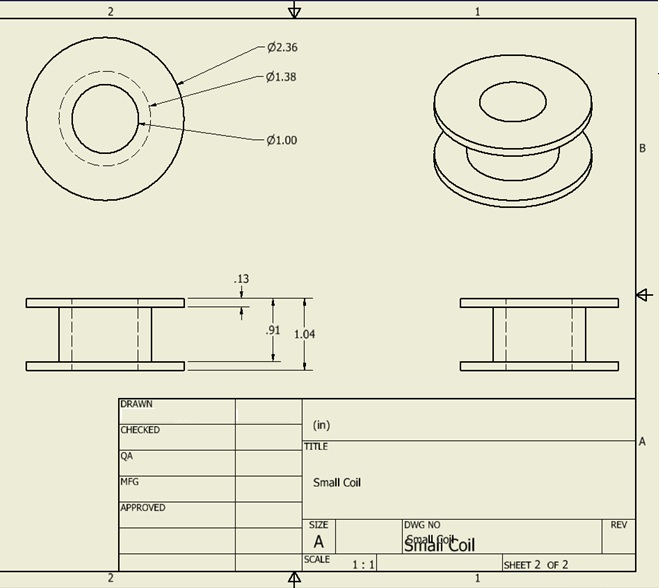Methods
Summary
Asthma medication has a hard time penetrating the mucus layer of diseased airways. Magnetic nanoparticles could potentially be used to carry the drug through the mucus. To study magnetic particle rotation in mucus, we will design a small coil insert to fit within the stage of a Lecia inverted microscope. This will allow video imaging of rotating particles within the mucus mesh.
Challenges
The pair of coils has to fit within the confines of a microscope stage. Our experimental design includes strict and adjustable parameters.

Strict Parameters
•Set-up must fit within 6.125x4 in opening in microscope stage
•Center of coils must be level with stage
•Uniform magnetic field over 1.0X1.0 cm
•Total wire resistance per coil must be 2Ω
Adjustable Parameters
•Wire gauge
•Inner and outer coil diameters
•Coil thickness
Wire coils are very heavy and hence cannot be directly mounted onto the microscope stage. The coils have to be mounted to the base of the microscope. For the set up to rest at the correct height, a stage and legs will be designed to hold the coils around the objective and sample.
Pre Analysis Plan
Given the parameters, a MATLAB script is be used to determine coil dimensions for different gauge square wires. It was determined that a 20 gauge square wire satisfied all requirements. A set of coils was designed and all pieces are ready to be 3-D printed.

The wire will be wound on coils using manual mechanical coil winder.
The legs posts and clips will be obtained from Thorlabs. Plastic legs, base and wingnuts to adjust the height of the insert will be obtained from McMaster-Carr. The base of the insert will be machined from a piece of acrylic and will have an opening just large enough to have room for a 20x, 40x or 60x objective. A sample holder had to be designed to hold the magnetic particles that were suspended in a fluid for imaging. The sample holder will be 3-D printed as a whole.
To produce rotating magnetic particles, each set of coils will be connected to an amplifier which is connected to a function generator. This will allow the user to control the magnetic field, frequency and amplitude of each set of coils.
Protocols
This project has not yet shared any protocols.